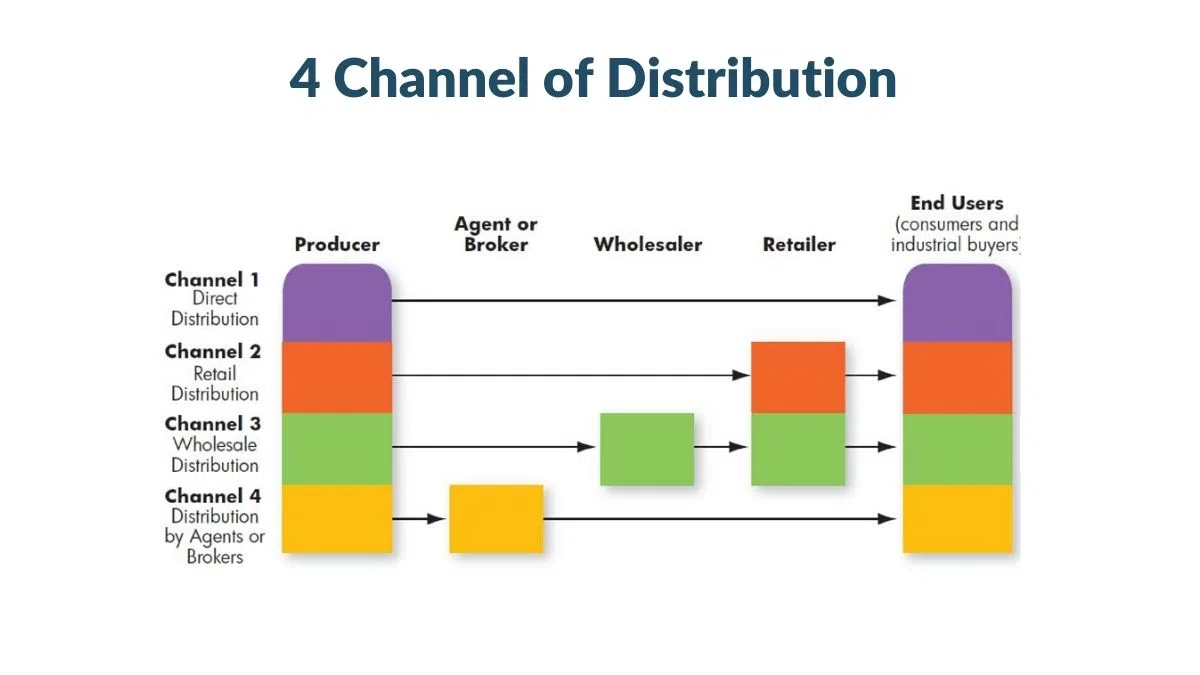Sales and distribution management in business is the process of managing the sales team and ensuring that products are distributed to customers efficiently and effectively. This process involves setting sales targets, analysing customer data, developing marketing plans, and coordinating with other departments within the company to ensure that the sales team has the resources it needs to meet its goals.
Sales and distribution management aims to optimise the sales process to increase revenue and grow the business. To do this, sales managers must constantly monitor sales data and adjust their strategies accordingly. They must also have a deep understanding of the products they are selling and the needs of their customers.
An effective sales and distribution management strategy can differentiate between a successful business and one struggling to meet ends. By developing a plan that considers all aspects of the sales process, businesses can ensure that their sales teams can sell more products and reach their full potential.
Did you know?
Sales and distribution both aim to provide services to the trade customer; however, sales play a significant role up front in the customer life cycle, while distribution becomes important upon receiving an order from the customer.
What Is Sales and Distribution Management?
Sales and distribution management (SDM) is the process of planning, organising, and controlling the activities of a company’s sales force and distribution network. The main goal of SDM is to ensure that the company’s products and services are available to customers when and where they need them.
The SDM process begins with the development of a sales and distribution plan. This plan outlines the company’s goals and objectives for the sales and distribution of its products and services. Once the plan is in place, the company’s sales force and distribution network can be organised and managed to achieve these goals.
The sales force is responsible for generating customer demand for the company’s products and services, and they do this through various activities such as advertising, promotion, and personal selling. The distribution network ensures the company’s products and services are available to customers when and where they need them, including warehousing, transportation, and customer service.
Also Read: How to Start Freelancing in 2023 – Complete Guide to Start a Successful Freelance Business
The Importance of Sales and Distribution Management
Sales and distribution management includes the management of both physical and information flows and encompasses the management of both direct and indirect distribution channels.
The main objectives of sales and distribution management are to:
- maximise sales and profits
- minimise inventory and other assets
- maximise customer satisfaction
The effective management of sales and distribution activities is essential for any organisation that wants to be successful in today’s competitive marketplace. An organisation’s sales and distribution strategy should be aligned with its overall business strategy and designed to meet its target market’s specific needs.
The Functions of Sales and Distribution Management
Sales and distribution management functions are to develop and implement strategies and policies to promote and sell the company’s products and services. This includes planning and overseeing the distribution of goods and services to retailers and customers. They work to ensure that the products and services are available when and where they are needed and that they meet customer expectations. They also work to develop relationships with key customers and partners and negotiate contracts.
What Are The 4 Distribution Management Channels?
The four distribution management channels are:
Wholesaler: The manufacturer or wholesaler distributes items to retailers through this route. Wholesalers, for example, sell the liquor brands of alcohol distillers.
Also Read: 10 Best Business Ideas to Start Under ₹5 Lakhs Investment
Retailer: The manufacturer or wholesaler sells items to retailers. For example, higher-end retailing chains such as Reliance Fresh, Star Supermarkets, Croma, and DMart distribute goods and accessories.
Distributor: This channel transports items from a manufacturer or supplier to an authorized distributor. For example, a Ford manufacturer may distribute various Ford brands and models to approved Ford dealerships for consumer or commercial fleet sales.
E-commerce: This is the most recent and disruptive distribution channel, in which things and services are digitally presented online before being transported straight to the client. E-commerce, as a fourth channel, has hastened change and compelled businesses to reevaluate their past approaches. For example, electronic companies especially manufacturers of mobiles now sell a significant portion of the devices online. Home appliances too are catching up on this trend.
A conventional four channel distribution system
The Challenges of Sales and Distribution Management
The challenges of sales and distribution management include:
- Ensuring that goods and services are delivered to customers in a timely and efficient manner
- Managing inventory levels to meet customer demand while minimising costs
- Selecting and managing the most effective distribution channels
- Negotiating and managing contracts with suppliers and distributors
- Implementing and managing effective pricing strategies
- Managing and motivating sales staff
- Monitoring and analysing sales and distribution data to identify trends and opportunities
Also Read: Business Ideas Under ₹50,000 – Which Businesses Can You Start Under ₹50,000
The Goals of Sales and Distribution Management
- Sales and distribution management aims to ensure that the products and services are delivered effectively and efficiently to customers.
- To achieve this goal, the sales and distribution team needs to work closely together to develop and implement strategies that will help to increase sales and improve distribution.
- One of the key strategies that sales and distribution management can use to achieve its goals is to develop a strong relationship with the customers. The team can better understand their needs and requirements by building a strong relationship with the customers. This understanding can then be used to develop and implement strategies to meet customers’ needs and expectations.
- Another important strategy that sales and distribution management can use to achieve its goals is to focus on the distribution channels. By ensuring that the products and services are delivered through the most efficient and effective distribution channels, the team can ensure that the customers receive the products and services promptly and conveniently.
The Impact of Sales and Distribution Management
Effective sales and distribution management is critical to any business’s success. The sales and distribution function ensures that products and services are delivered to customers promptly and efficiently. The sales and distribution manager must thoroughly understand the market, the competition, and the customer base’s needs. They must also be able to develop and implement strategies that will maximise sales and profitability.
An effective sales and distribution management team will work closely with other departments within the company to ensure that all products and services are delivered as promised. They will also develop and maintain relationships with key customers and suppliers. To be successful, the sales and distribution manager must be able to communicate effectively with all members of the team.
Also Read: What is a Business? – Business Meaning, Characteristics, Types & More!
The Future of Sales and Distribution Management
The future of sales and distribution management lies in managing and monitoring sales data and trends effectively. This will allow managers to make better decisions about where to allocate resources and how to target their sales efforts.
In addition, the use of sales analytics will become increasingly important to identify opportunities and optimise results.
Another key trend will be the continued move towards digital sales channels and away from traditional brick-and-mortar stores. This shift will require companies to invest in developing their online presence and capabilities.
Finally, the focus on customer experience will become even more important as companies look to differentiate themselves in a competitive marketplace.
Conclusion:
The main aim of sales and distribution management is to achieve the desired level of sales and profitability. There are various channels of distribution that a company can use to sell its products and services. The most common channels are through retailers, wholesalers, and direct selling. Each of these channels has its advantages and disadvantages. The company must choose the most appropriate channel for its products and services.
The sales force is the most important part of the sales and distribution process. The sales force is responsible for generating sales and ensuring that the products and services are delivered to the customers. The sales force must be properly trained and motivated to achieve the desired results. The distribution network must be designed in such a way that it can reach the target customers efficiently. The distribution channels must be able to deliver the products and services to the customers in a timely and cost-effective manner. An effective sales and distribution management system can help a company to achieve its sales and profitability goals.
Follow Legal Tree for the latest updates, news blogs, and articles related to micro, small and medium businesses (MSMEs), business tips, income tax, GST, salary, and accounting.







